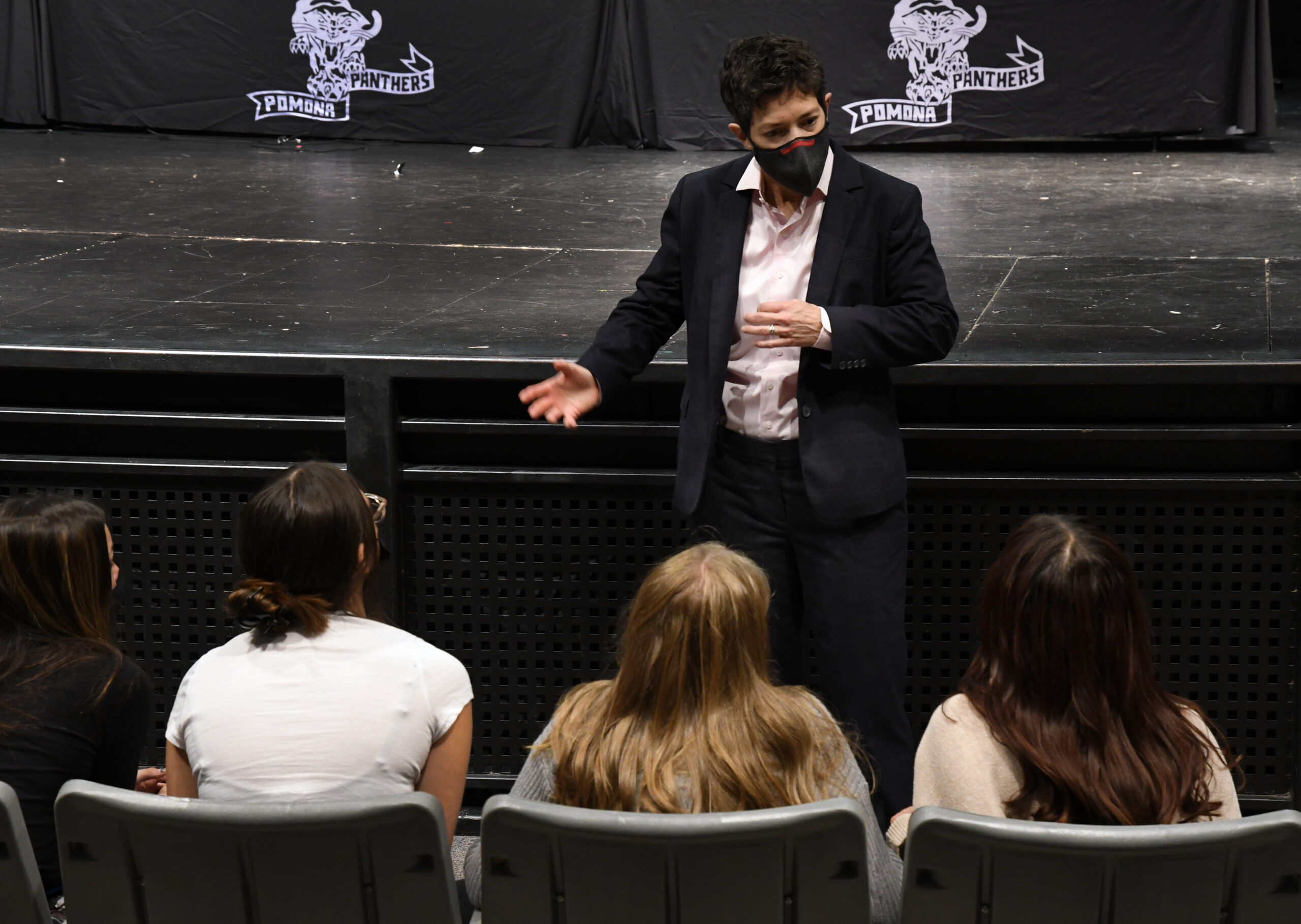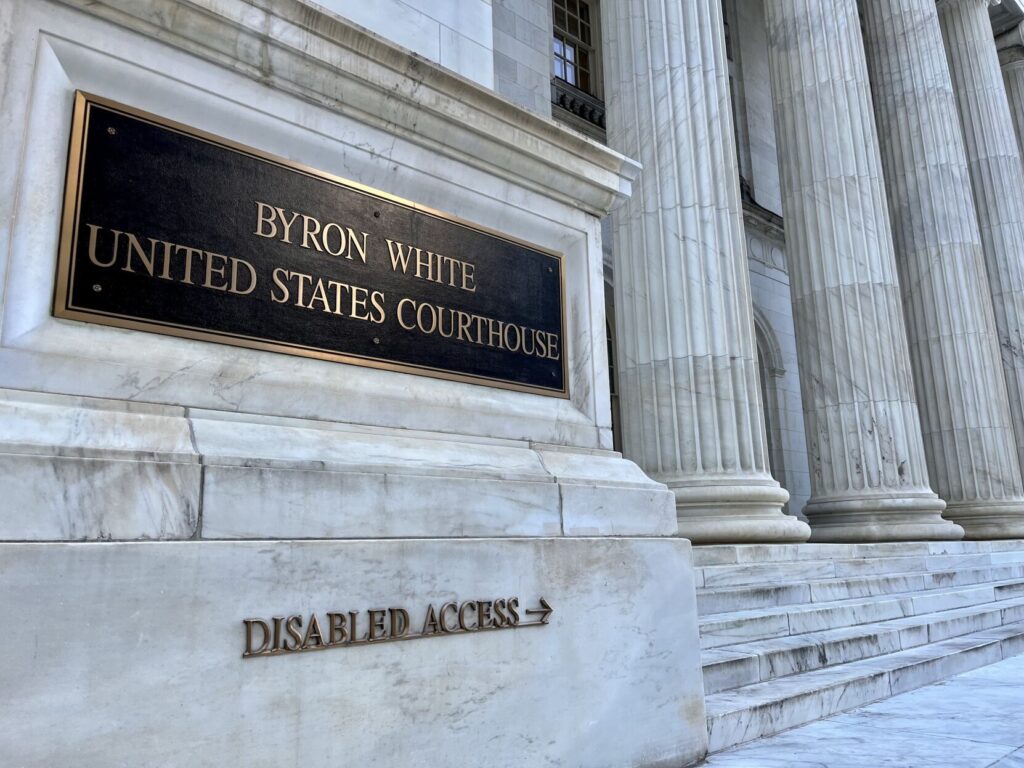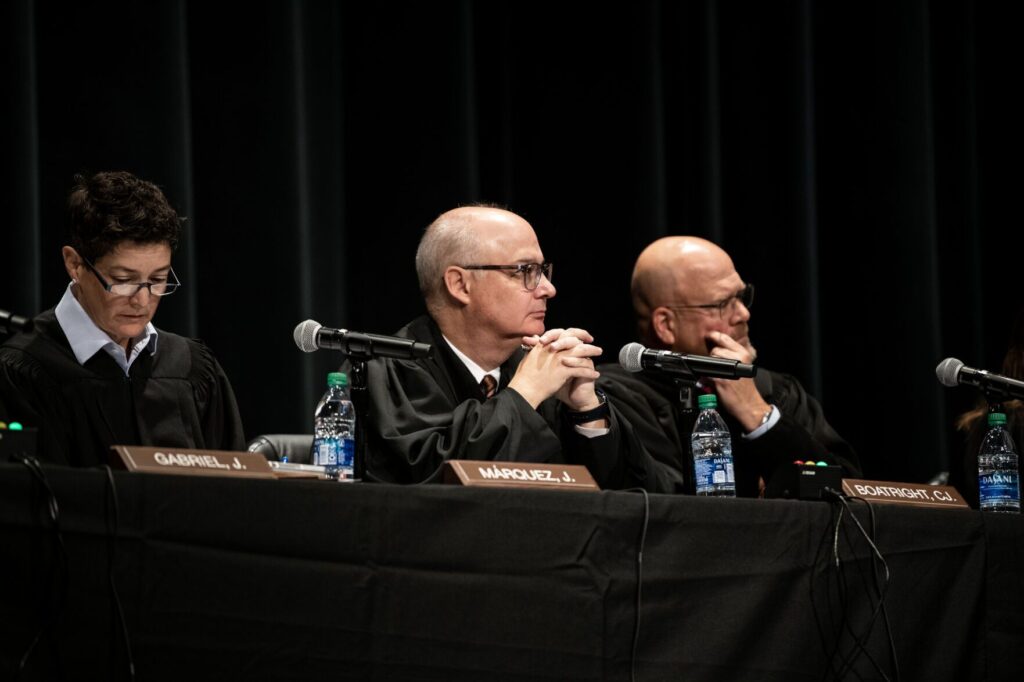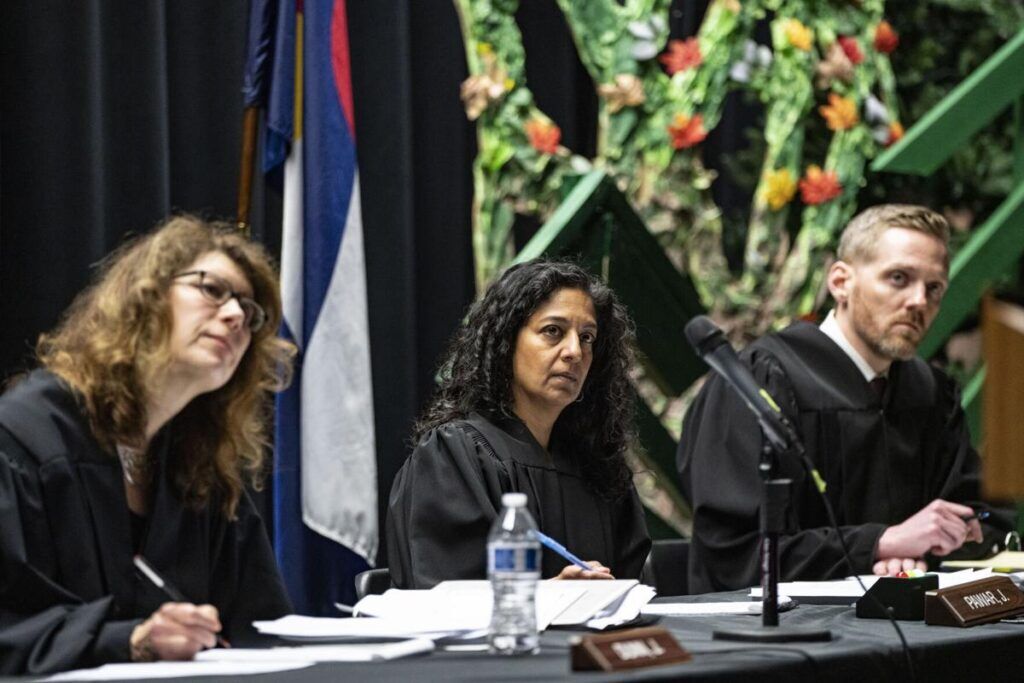To harm or not to harm: State Supreme Court examines law against spitting on officers
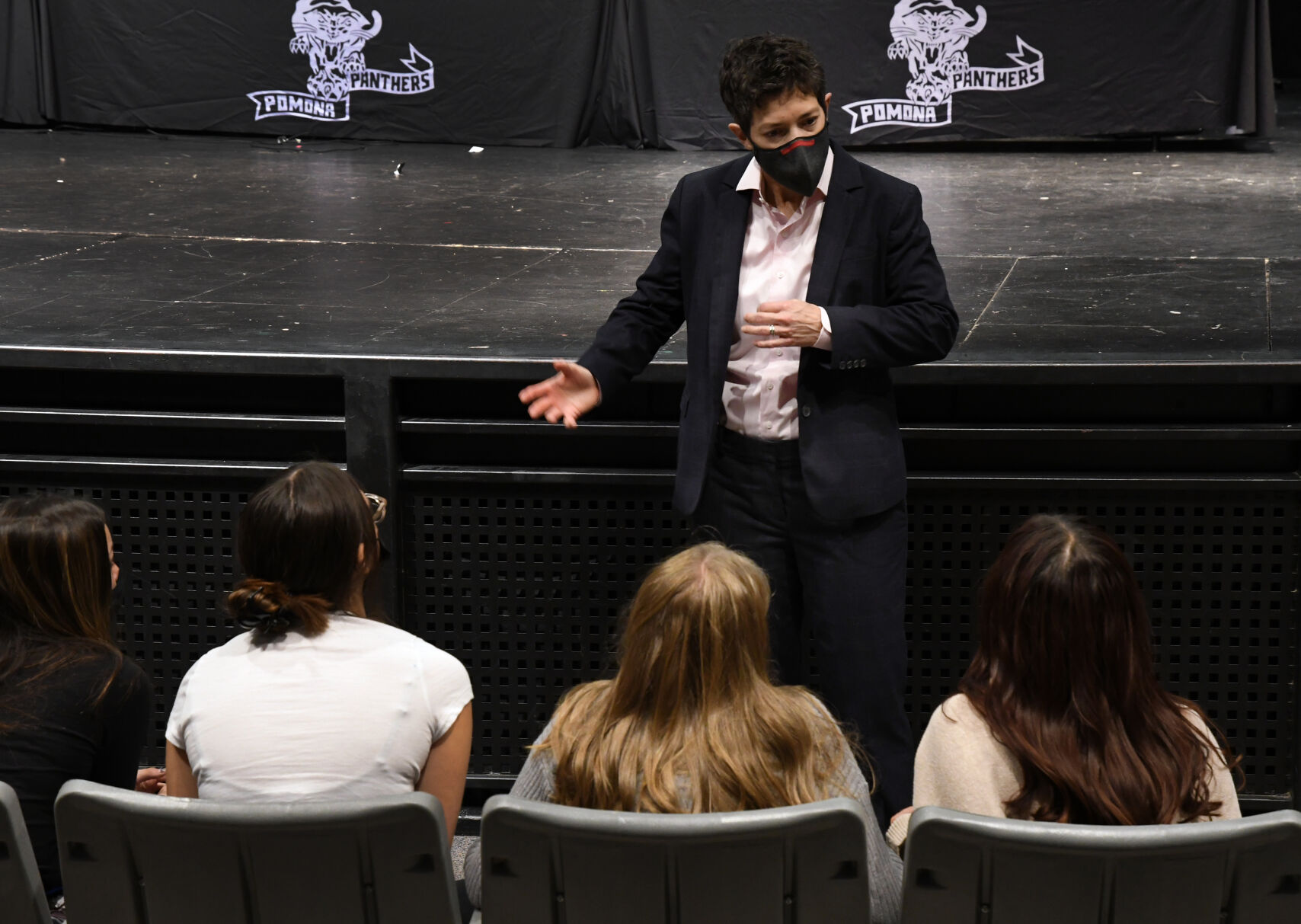
Although it is undisputed that intentionally spitting on a police officer is a crime, Colorado’s Supreme Court justices on Tuesday grappled with whether a La Plata County woman was properly convicted of a felony offense for her spitting or if she actually committed a less serious infraction.
A jury found Cheryl Lynette Plemmons guilty in 2017 of three counts of second-degree assault, which is a felony, for spitting on two police officers who had initially arrived to conduct a welfare check. She spat on both of the officers inside her home and once inside a patrol car. Colorado outlaws the act of placing first responders in contact with saliva, blood or feces if there is an “intent to infect, injure, or harm.”
Plemmons testified that, by spitting, she had wanted to convey the message of “Please don’t hurt me, please don’t take me to jail.” But the government attempted to prove that Plemmons actually had an intent to harm. As the prosecutor told the jury, “She wasn’t spitting on them for funsies, she was spitting on them because she wanted them to be harmed.”
District Court Judge William L. Herringer gave jurors an instruction defining the term “harm.” Under the law, Herringer said, it meant “psychological or emotional harm” that could include fear, anxiety or “other type of significant distress” from contact with bodily fluids. In addition, Plemmons need not have intended to cause “permanent or long-lasting” damage, but rather “psychological or emotional harm that is not fleeing or minimal in nature.”
That instruction was the focus of Plemmons’ appeal.
“This case is about the meaning of harm. I’m asking this court to hold that harm refers to exclusively physical injuries,” Deputy State Public Defender Jacob B. McMahon, representing Plemmons, told the justices. To hold otherwise “invites unconstitutionally discriminatory enforcement by allowing the state to arbitrarily select misdemeanors and felonies for substantially the same conduct.”
McMahon was referring to the fact that there is another prohibition in Colorado law against spitting on first responders. In contrast to the felony law, which requires an intent to infect, injure or harm, someone is only guilty of a misdemeanor if they spit with an intent to “harass, annoy, threaten, or alarm.”
The justices puzzled over how to draw a clear line between two offenses that sound similar, but have different criminal consequences.
“What does it look like to prove, as this trial judge said, that someone had to commit a significant injury? To significantly alarm someone emotionally versus to less significantly alarm someone emotionally?” wondered Justice Melissa Hart.
Until 2015, it was a misdemeanor offense to spit on an officer with the intent to infect, injure, harm, harass, annoy, threaten or alarm. The legislature that year took the first three intents and created a new felony with them. As proposed, Senate Bill 67 would have simply left any act of spitting on first responders as a felony, but legislators amended the measure to avoid over-criminalizing actions like spitting on the boots of a firefighter.
The Supreme Court, however, found no clear direction from the legislature about how to interpret an intent to harm differently from an intent to annoy or alarm. Justice Monica M. Márquez was concerned that, without a meaningful distinction, district attorneys could charge someone with either a felony or a misdemeanor on a whim.
“We are potentially giving too much discretion to prosecuting authorities to take two defendants, each of whom spits in an officer’s face, and treat them entirely differently. I’m worried about that,” she said.
Assistant Attorney General Patrick A. Withers acknowledged the law was “not an ideal statute,” but indicated it was possible to distinguish the conduct. He rejected McMahon’s attempt to paint “harm” as exclusively physical, arguing that the word’s common usage suggested a broader meaning.
“Indeed, when the Rolling Stones sang, ‘Who’s that woman on your arm? All dressed up to do you harm,’ no one asked how the woman’s clothing would cause her companion physical pain,” Withers wrote in the government’s brief.
Withers instead believed the “harm” in the felony law meant a “substantial” harm with greater “duration or intensity” than mere annoyance.
“You’re asking us to pack a lot into a single word, harm,” interjected Márquez, adding that those descriptors appeared nowhere in the instruction given to Plemmons’ jury.
“You spit on someone, you cause them great emotional upset, they’re concerned. That seems like the definition of an intent to alarm,” said Justice Richard L. Gabriel. “I guess I have a constitutional concern about leaving it for the jury to decide what’s significant and the prosecutor could charge whichever.”
In February of last year, the state’s Court of Appeals upheld the jury instruction, believing it made clear that spitting in a manner that created a risk to the officer – spitting in their face rather than on their shoe – adequately communicated what “harm” meant.
McMahon acknowledged that people, including police officers, can be rightfully upset when spat upon.
“But the law isn’t in terms of are you really traumatized or are you only minorly traumatized,” he said to the Supreme Court. “If you intend to freak someone out … you have alarmed them.”
The justices agreed to hear Plemmons’ appeal only to review the correctness of the trial court’s definition of “harm,” and relatedly whether there was enough evidence of harm to sustain Plemmons’ convictions. Plemmons had also sought review of the Court of Appeals’ determination that the felony law was not so vague as to be unconstitutional.
In Plemmons’ view, the meaning of “harm” was ambiguous and could lead prosecutors to, as Márquez and Gabriel suggested, arbitrarily charge a person with either a felony or a misdemeanor. The Supreme Court declined to review the constitutionality of the law, but individual justices nevertheless felt they could consider the constitutional implications of a vague law in their decision.
“The legislature was pretty clearly trying to get at what’s a significant problem in the real world – which involves a lot of pathogens – and police officers and others who have people in custody have to worry about those pathogens,” said Justice William W. Hood III. “The trauma that comes with being spat on arguably exceeds that trauma that one might experience even if one gets punched in the face.”
But when it came to the meaning of harm, he added, “all roads seem to lead to ambiguity for me.”
The case is Plemmons v. People.
